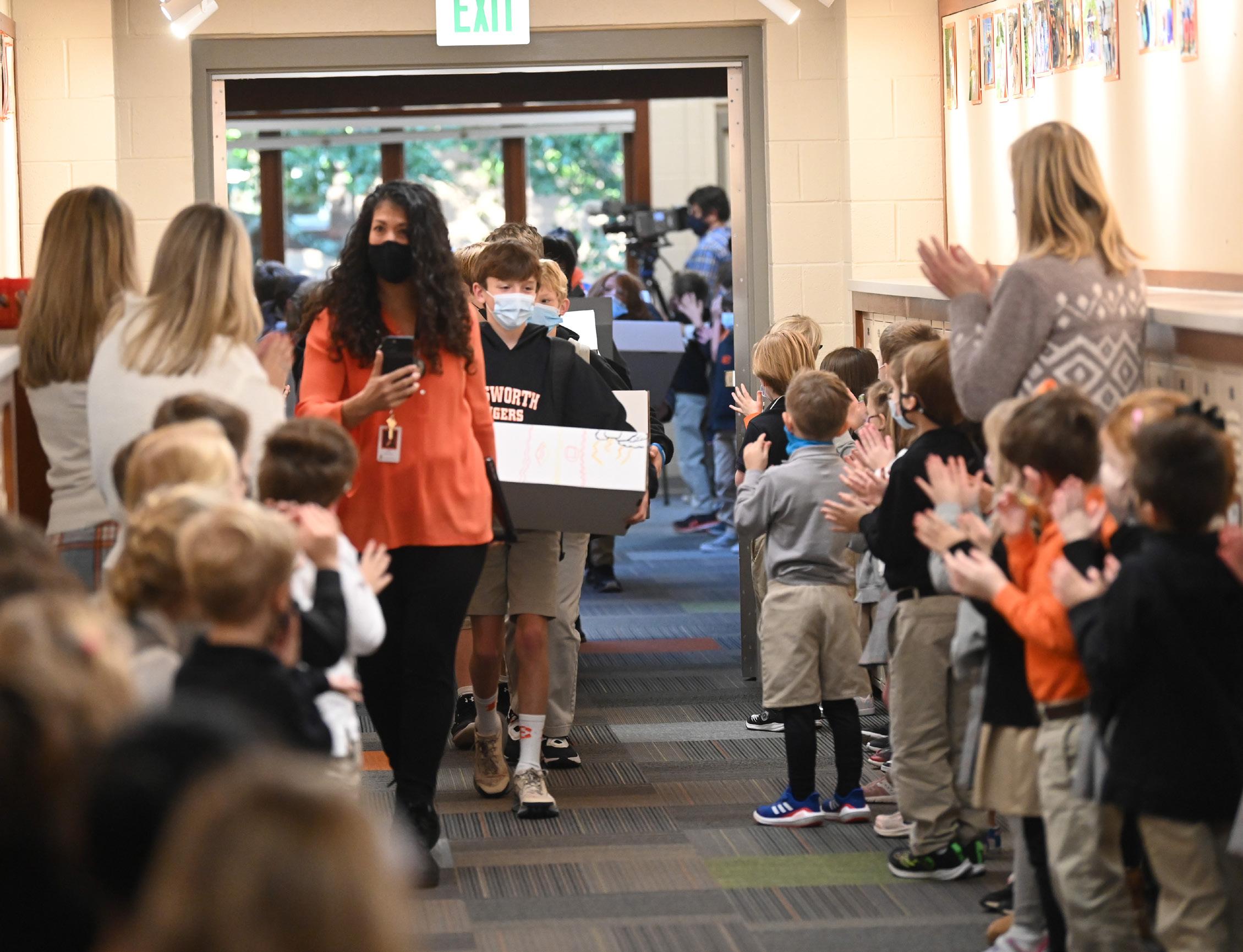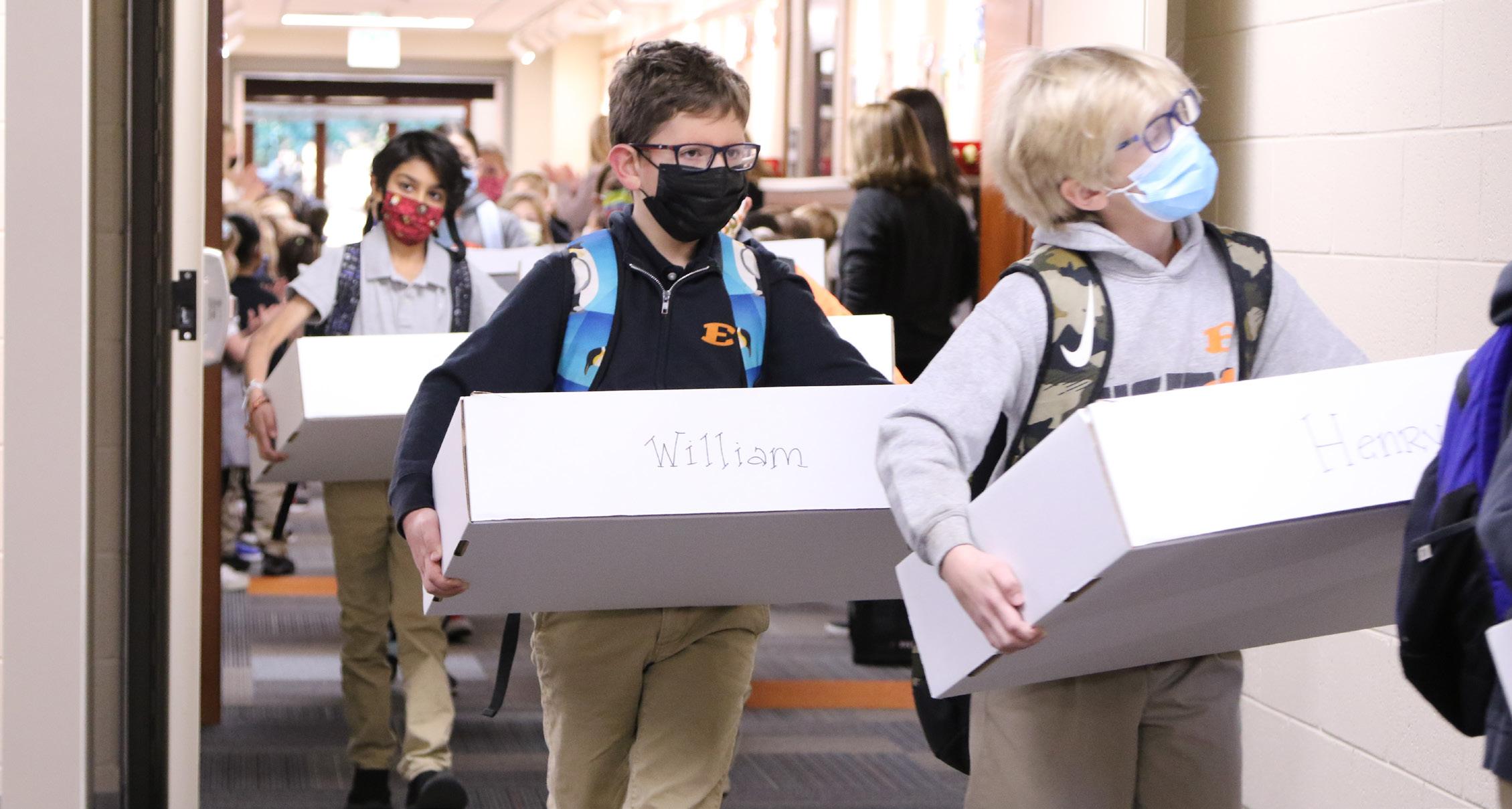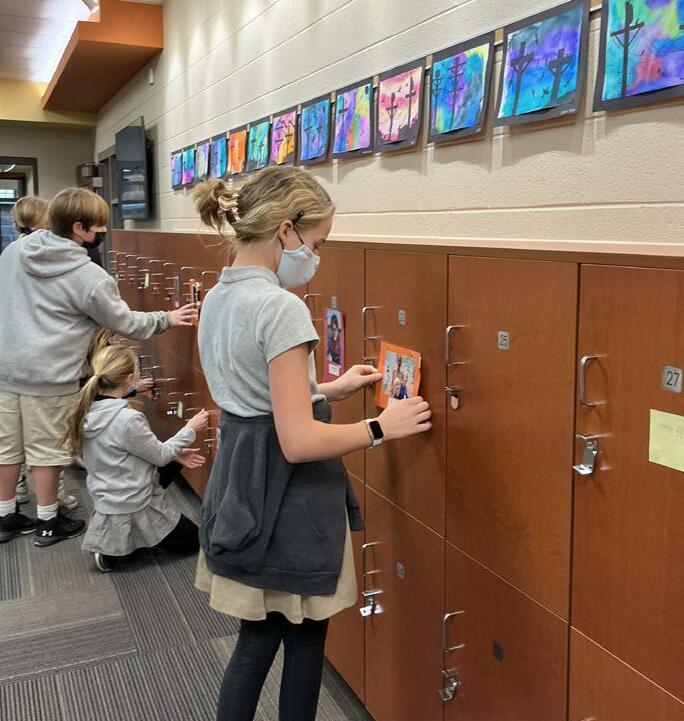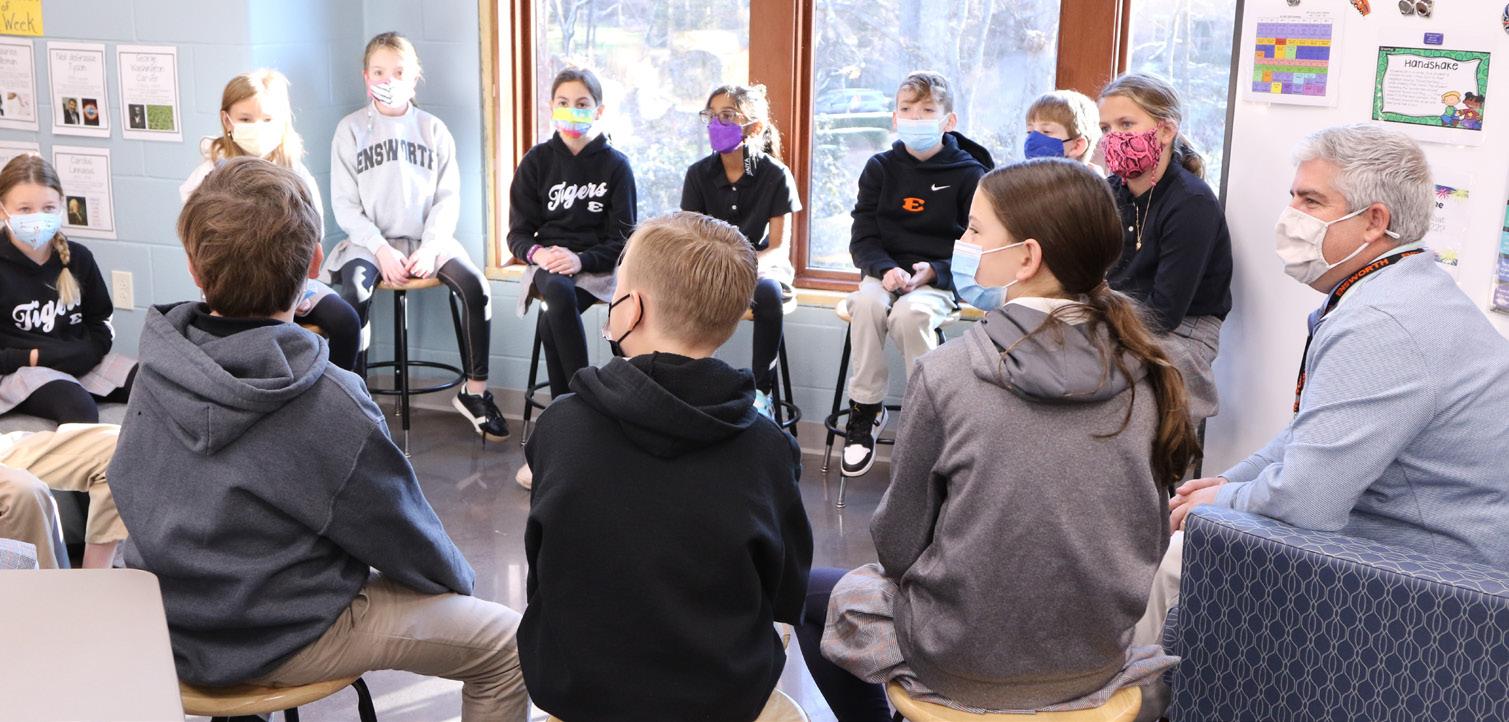
5 minute read
Opening of the New Lower School Building
Weaving a Continuous Experience from Grades K-12
On the Red Gables Campus, the first day of the spring semester began with a lot of clapping. Students in Grades K–2 lined the hallways, cheering and applauding as their friends in Grades 3–5 carried their belongings from their old classrooms and processed through the crowd to their space in the new Lower School building. The celebrating continued in the new classrooms, as students walked around wide-eyed, clasping their hands together in delight as they explored the bright, colorful spaces that were now their new home.
The two-story addition holds classrooms that are 40% larger than the old classrooms, expansive math and science labs, a tech lab/makerspace, and multiple collaborative meeting rooms for students and teachers alike. The design of the building was developed from input and ideas of a team of invested experts: the faculty who would be using the spaces daily. “All of the teachers and the various committees were able to share their opinions and their thoughts on what would promote a successful classroom environment,” shares Grade 3 teacher Virginia Voigt. “So, really, you can look at different areas of each room and know that a teacher thought that through, and it was all with purpose.”

The dynamic and flexible spaces are designed to augment the implementation of a progressive curriculum, inspire collaboration, and enrich the community as a whole. Director of Curriculum and Instruction Bobby Mirzaie explains the significance of the new building in contributing to better curricular continuity across Grades K–12. “In the Middle School and High School, teachers can design classroom environments that best serve the learning goals for each lesson,” he says. “For the times when students need to engage in active discourse and share different ideas, we have spaces with large Harkness tables. When students need to engage in long-term, hands-on science projects, there are lab stations with ample space for equipment, experiment setup, and active exploration. When teachers want to design activities that foster collaboration, our classrooms have the space for students to work together in small groups. In contrast, the teacher can move and support each student’s individual questions and needs. Now, with the new Lower School building, Lower School teachers can further build activities for the types of collaborative, interactive learning that students will encounter in Middle School, High School, and beyond.”
Grade 3 teacher Jennifer McGee is excited about the opportunities that the new spaces provide. ”This new space will enhance the way that I approach lessons and that I work with students in that we have many of the same materials we had before, but we have new ways to use them, “she shares. “For example, we have new equipment and iPads, and we now have spaces to go and record and do projects so that multiple things can be happening in the room at the same time. Children can feel free to explore in a very natural way or to work independently, and I can more easily work around the room and meet with different groups.”

Even though classes have only convened in the new buildingfor a few weeks, Grade 5 teacher Kelly Goorevich sees theimpact the new space has had on her students. “Already,we’ve observed that the light and the space have given kidsthe freedom to feel like they can move. Children are turningtheir chairs around, and they arefinding ways to position their bodiesand relocate their desks so that they’remaximizing how their brains work,” shesays. “In the old classroom, the childrenwere confined by the configurations ofthe desks that I arranged. Now, with thekidney tables, the reading nooks, thespaces in the hallway with the benches,and the clean, soft, big carpeted spaces,kids have places where they will be ableto join together and share ideas. I’mgoing to get to see more of who they arebecause the space is going to help themreveal those things.”
The larger math and science classroomsalso enable enhancements to thecurrent curriculum and allow studentsto dive deeper into concepts with morecomprehensive experiments. “We have somuch more we can do now with our space,especially with our science labs,” shares Grade 4 teacher SydneRichardson. “Chris Champion and I are really excited to dive in,and we’ve already had conversations about what we are going todo next with our science labs, because with the new space andmaterials, we can go even further and deeper to create awesomeexperiments and projects that will engage and excite students.”

The new spaces are outfitted with modular and easily moveable furniture that provides flexibility of form and function. A walk through the hallways reveals that each classroom has a unique setup, which may change as needed from day to day. Mirzaie notes that this flexibility is one of the most critical aspects of the new building. “Supporting the learning for each student will drive what each classroom space will look like,” he says. “Classrooms can be rearranged to simultaneously support collaborative work for when the learning needs to be together as well as personalized, one-on-one work when students need individual attention. This will enable our students to progress on the path of academic excellence in shared learning environments that build community and collaboration.”
When Grades 3-5 moved into the new building, construction immediately began on their old classrooms to create an expanded science lab for Grades K-2, dedicated World Language classrooms for all Lower School students, and a new larger space for the AfterCare program. These renovations are projected for completion later this spring.
Together, these campus enhancementsensure an environment where studentscan cultivate both a depth and breadthof knowledge and experience, setting a solid foundation forgrowth and learning throughout their K-12 journey. As wecelebrate the doors opening on this new building, we lookforward to the doors that will open to new possibilities for allof our students and faculty.



